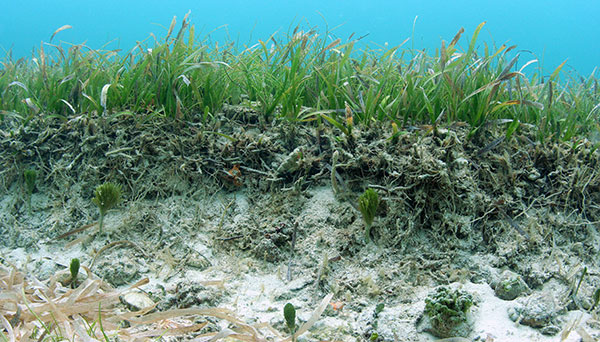CEC celebrates World Wetlands Day with first continent-wide collection of North America’s blue carbon habitat maps
New maps and publications highlight the value of coastal wetlands in mitigating climate change effects
Montreal, 2 February 2016 —The Commission for Environmental Cooperation (CEC) is acknowledging World Wetlands Day with the release of maps and publications aimed at advancing the conservation and restoration of coastal habitats across North America.
World Wetlands Day marks the adoption of the Convention on Wetlands on 2 February 1971.
Tidal wetlands, mangroves, salt marshes, and seagrass beds play a vital role in trapping and storing carbon. However, ecosystems stressors such as nutrient runoff, habitat conversion, and sea-level rise are degrading and even destroying these "blue carbon" habitats.
To address this issue, the CEC—in collaboration with Parks Canada, Mexico's Comisión Nacional de Áreas Naturales Protegidas (Conanp), Mexico’s Comisión Nacional para el Conocimiento y Uso de la Biodiversidad (Conabio), the US Environmental Protection Agency (EPA), the National Oceanic and Atmospheric Administration (NOAA) and the US Geological Survey (USGS)—led an initiative designed to improve data, mapping and approaches to asses carbon dynamics in North American blue carbon habitats.
Outcomes from this joint initiative include:
- The first set of comprehensive blue carbon maps for North America, which show 47,776 km² of blue carbon mapped to date.
- A report, North America’s Blue Carbon: Assessing Seagrass, Salt Marsh and Mangrove Distribution and Carbon Sinks, that summarizes the spatial distribution of North American coastal blue carbon habitats and documents blue carbon sinks.
- Detailed synopses highlighting the results of five coastal blue carbon research projects.
It is hoped that the maps and publications released today will contribute to the conservation of North American seagrasses, salt marshes, mangroves, and tidal wetlands, as well as the carbon they harbor.
To view or download the report and synopses, visit our Virtual Library at www.cec.org/library.
Keep up-to-date with the CEC’s work by following @CECweb on Twitter or like us on Facebook at www.facebook.com/cecconnect.

About the CEC
The Commission for Environmental Cooperation (CEC) was established in 1994 by the governments of Canada, Mexico and the United States through the North American Agreement on Environmental Cooperation, a parallel environmental agreement to NAFTA. As of 2020, the CEC is recognized and maintained by the Environmental Cooperation Agreement, in parallel with the new Free Trade Agreement of North America. The CEC brings together a wide range of stakeholders, including the general public, Indigenous people, youth, nongovernmental organizations, academia, and the business sector, to seek solutions to protect North America’s shared environment while supporting sustainable development for the benefit of present and future generations
The CEC is governed and funded equally by the Government of Canada through Environment and Climate Change Canada, the Government of the United States of Mexico through the Secretaría de Medio Ambiente y Recursos Naturales, and the Government of the United States of America through the Environmental Protection Agency.